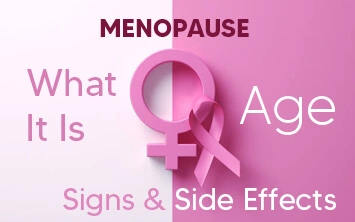Published on: November 18, 2025
Author: Admin
What is Blue Waffle?
Blue waffle is an internet hoax claiming to be a sexually transmitted infection (STI) that causes the female genitals to turn blue.
The hoax was circulated all over the internet with some unreal images in 2010. This has created unnecessary anxiety and fear among the public. To control this, many health organisations and medical professionals have repeatedly debunked the blue waffle disease claim. They confirmed the non-existence of the condition through various evidence and scientific journals.
This blog has come forward to help readers better understand the fictional blue waffle STI disease, along with real conditions that can cause similar symptoms.
Why the Blue Waffle Hoax Persists?
The hoax about blue waffle has been widely spread as its fictional symptoms are strongly associated with real STIs and vaginal infections. This has made the blue waffle disease seem more credible. The fictional symptoms may include:
- Vagina or vulva turns a blue or purple colour.
- Severe burning, itching, and irritating sensations in the genital area.
- Unusual or foul-smelling discharge from the vagina.
- Lesions, sores, or scabs on the genitals.
- Severe pain in the abdomen or pelvis region.
- Pain during urination or intercourse.
Note: Apart from the primary symptom – vagina turning blue, STIs do cause other symptoms like soreness and irritation.
What Are the Real Conditions That Have Symptoms Similar to Blue Waffle?
When a person experiences any of the above-mentioned symptoms, it could indicate a real vaginal condition. These conditions are generally manageable with proper medical help. The common conditions may include:
Vaginitis
Vaginitis is a medical condition that is characterised by the inflammation of the woman’s vagina and sometimes the vulva. It can cause symptoms like irritation, itching and abnormal discharge. Vaginitis is often caused by an imbalance of the natural vaginal bacteria, yeast infection or an allergic reaction towards certain products. Hormonal changes during menopause or pregnancy, certain medications, and sexually transmitted infections (STIs) are also common causes of the condition.
The common vaginitis condition may include:
Bacterial Vaginosis (BV)
Bacterial vaginosis (BV) is a condition caused when good bacteria, “lactobacilli”, decrease and bad bacteria, “Gardnerella vaginalis”, increase. This can lead to the symptoms of foul odour, vaginal discharge, and irritation.
Yeast Infections
Yeast infections are caused by the increasing growth of Candida fungi. This growth may happen when the imbalance between good bacteria and yeast in the vagina is disrupted. Common causes may include a weakened immune system, hormonal changes during pregnancy or birth control, high sugar intake, antibiotic use, and wearing non-breathable clothes.
Trichomoniasis
Trichomoniasis is a sexually transmitted infection (STI) that can contribute to vaginitis. The condition is caused by the parasite Trichomonas vaginalis, which can be transmitted through sexual contact. The condition can lead to symptoms like itching, foul-smelling vaginal discharge, and a burning sensation.
Sexually Transmitted Infections (STIs)
Sexually transmitted infections are caused by sexual contact, not only in the vagina but also in the anus and mouth. Viruses, bacteria, or parasites can often cause the infection. Most STIs are asymptomatic, meaning they cause no symptoms. This is why people unknowingly transmit the infection to the other person. However, some infections do develop mild symptoms like sores or warts, unusual discharge, burning sensation during urination, and itching.
The common STI conditions may include:
Bacterial STIs
Chlamydia and Gonorrhea
These conditions can cause symptoms that are similar to blue waffles apart from discolouration. They may include pain during urination, pain during sex, and discharge from the genital area.
Syphilis
Syphilis is a common STI that can develop sores and other symptoms. However, the symptoms may widely depend upon the stage of the infection.
Viral STIs
Genital Herpes
Genital herpes is another common STI condition caused by the herpes simplex virus. The condition can lead to developing symptoms like painful sores or blisters in the genital area. It can also develop around the mouth and anus.
Human Papillomavirus (HPV)
Human papillomavirus (HPV) is a viral infection that can be transmitted through skin contact, specifically during sexual activity. The infection generally spreads with numerous strains that can cause itchy genital warts. In case of high-risk strains, it can lead to cancer if untreated.
Other STIs
Trichomoniasis
It is a parasitic vaginal infection that can cause itching, foul-smelling vaginal discharge, and a burning sensation.
Even though these real conditions exhibit similar symptoms of fictional bluewaffle, they do not cause the vagina to turn blue or purple as described in the hoax images.
The chart shows the comparison of symptoms between the real conditions and the fictional blue waffles.
| Conditions (STIs and Others) | Blue discolouration | Itching, burning, swelling, or irritation | Unusual or foul-smelling discharge | Genital sores, bumps, or blisters | Pain during urination or sex | Abdominal or pelvic pain |
|---|---|---|---|---|---|---|
| Trichomoniasis | ✓ | ✓ | ✓ | |||
| Genital herpes | ✓ | ✓ | ||||
| Chlamydia | ✓ | ✓ | ✓ | ✓ | ||
| Gonorrhea | ✓ | ✓ | ✓ | ✓ | ||
| Syphilis | ✓ | |||||
| Human papillomavirus (HPV) | ✓ | |||||
| Yeast infection (not an STI) | ✓ | |||||
| Bacterial vaginosis (not an STI) | ✓ | ✓ | ||||
| Cervical endometriosis (not an STI) | ✓ |
Book Your Free Online Consultation
Call Now: 80047 80048What People Say About Blue Waffle
Many online rumours describe blue waffle disease in women with a list of alarming symptoms - blue-coloured vulva or labia, foul-smelling discharge, severe itching, painful sores, swelling and a burning sensation. According to the myth, this so-called condition is believed to be linked to poor hygiene or unsafe sex.
However, the truth is very different. No medically recognised infection shows symptoms anywhere close to what is claimed about blue waffle. There is no clinical evidence to support the idea that the vulva or vagina could turn blue because of any STI.
Healthcare professionals have been very clear: blue waffle sexually transmitted disease is not real. There is no STD that can make a woman’s genitals turn blue, and the entire concept remains an internet hoax with no scientific backing.
What are the Potential Causes of Vaginal Discolouration?
Vaginal or vulvar discolouration to blue may happen due to various physiological or hormonal changes. They are usually harmless and can be resolved on their own. However, the potential causes of this occurrence, similar to the blue waffle skin internet hoax, may include:
Increased Blood Flow (Sexual Arousal)
Increased blood flow during sexual arousal can cause a temporary bluish or purplish hue in the vaginal and vulval region. This can happen because of the engorgement of the blood vessels around the region. It is a normal physiological response and does not require any medical attention.
Hormonal Fluctuations
Hormone fluctuations, especially estrogen and progesterone, can cause the genital area to become darker or slightly discoloured. This can happen during puberty, the menstrual cycle, pregnancy, and menopause.
Pregnancy (Chadwick Sign)
During pregnancy, the blood volume and its circulation to the pelvic region increase significantly to support the development of the growing embryo. This occurrence can cause the vagina to turn blue or purple, particularly between six and eight weeks.
Medication Effects
Certain steroids used to reduce inflammation can primarily lighten the skin pigmentation as a potential side effect. Furthermore, hormonal pills like oral contraceptives and hormone replacement therapy can darken the skin around the vaginal region.
Other Causes
Even though rare, conditions like cervical endometriosis, adenomyosis, vulvar varicosities, and blue nevi can cause blue colour changes in the vagina and/or cervix.
What to Do if You Experience STI Symptoms?
If you experience any of the STI symptoms, here’s what you can do.
Abstain from sex
Abstaining or stopping yourself from having sex as soon as you are aware of the infection is highly recommended. This includes oral sex.
Seek medical attention
Get yourself completely checked by a professional healthcare provider or a sexual health doctor immediately. Do not hesitate to discuss the symptoms associated with the discomfort.
Talk to your sexual partner
Letting your sexual partner know what you are experiencing is important so that they can also be tested and treated. This can largely help to prevent the spread of the infection.
Complete the full treatment
Complete the full course of your medication, even if the symptoms similar to the so-called blue waffle STD improve. This can ensure the complete recovery and prevent reinfection.
Follow up with your doctor
Following up with your doctor even after the recovery is important to ensure that the treatment is effective.
Summary
Blue waffle is a fabricated medical condition, not a real one. The alarming and misleading blue waffle disease pictures are hoaxes made using the Photoshop application.
Several medical professionals have debunked the existence of blue waffle disease through evidence and journals. This incident highlights how dangerous it can be to rely on unverified online resources for medical information.
The misinformation arose due to the lack of knowledge about real sexually transmitted infections (STIs).
Understanding the facts of STIs and the importance of regular STI testing is crucial to preventing the spread to others. It is also helpful to avoid delay in seeking proper medical help for real conditions.
If you still have any concerns, having a consultation with experts at Aval Clinics is recommended. They can guide you.
Contact us today for expert advice and personalized care:























